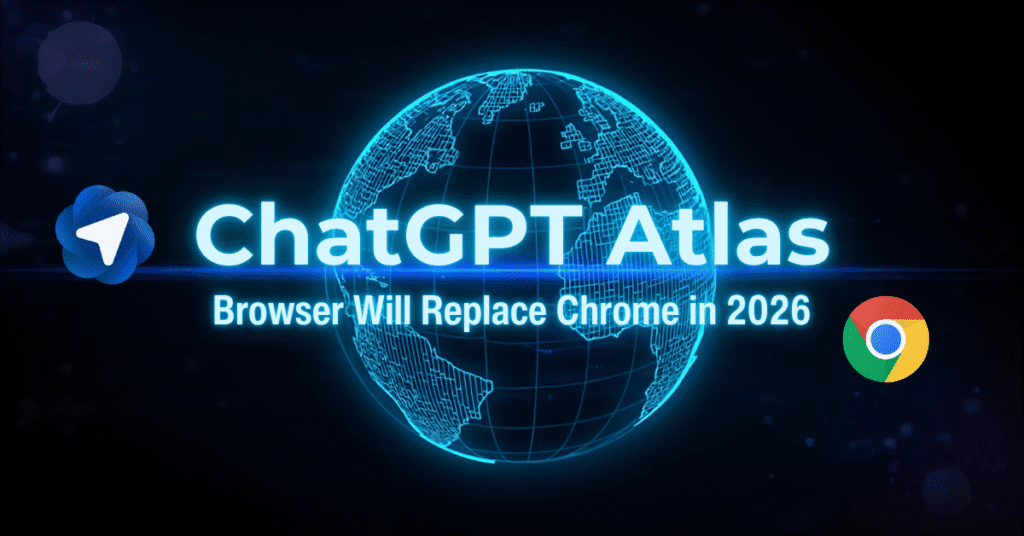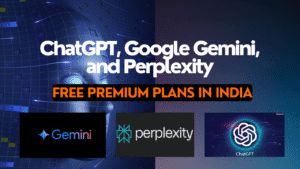ChatGPT Atlas: The Browser That Will Make Chrome Obsolete
OpenAI didn’t just update ChatGPT.
They completely rebuilt the internet experience from the ground up.
And what we’re about to show isn’t just speculation. This launched in October 2025 and transformed how we interact with the web.
The Death of Traditional Browsing
Think about how you use a browser right now. Multiple tabs, copy-pasting between windows, constantly switching context, manually typing URLs, and traditional search results that force you to do the work. That paradigm just died.

OpenAI just released ChatGPT Atlas, and it’s not just another browser. This is the first AI native browser, built from the ground up around conversational intelligence, and the implications are absolutely staggering.
What Makes Atlas Different?
Here’s what’s revolutionary. Atlas makes ChatGPT the beating heart of your browsing experience. Not a feature bolted on, not a sidebar you occasionally use—the core of how you navigate the internet. You get three game-changing capabilities that have never existed in a browser before.
First, chat everywhere. ChatGPT follows you to every web page. Working on an email? It’s there. Reading a GitHub pull request? It understands the code and compares products. It analyzes for you—no more copy-pasting between tabs, no more context switching. The AI is fully aware of what you’re looking at.
Second, browser memory. This is huge. ChatGPT already has the best memory feature of any AI model. It learns about you over time. Now that memory extends to your entire browsing experience. The browser remembers your preferences, your habits, and your frequent tasks. Search your web history by describing what you’re looking for, not remembering exact keywords. Find that document from three weeks ago by saying, Search for that doc about Atlas design, and it finds it.
Third, agent mode. This is where it gets absolutely wild. ChatGPT can actually control your browser, book reservations, fill out forms, add items to shopping carts, create tasks in project management software, and complete workflows that used to take 20 minutes in 2 minutes while you do something else.
How It Actually Works
Let me break down what this looks like in practice. The home screen feels familiar. You’ve got your search bar, your bookmarks, and your autofill. But now, you can talk to your browser like a person.
Type Hacker News, and it takes you to the URL. Or type, what ingredients do I need to cook this recipe for eight people? And it analyzes the web page, does the math, and gives you a shopping list.
The search experience is revolutionary. When you search for something like new PTA movie reviews, you get multiple result types in tabs at the top.
The first tab provides the traditional ChatGPT summary, with synthesis and analysis. But, and this is brilliant, you also get tabs for traditional Google-powered results, images, videos, and news—best of both worlds.
But here’s where it gets really powerful. Every web page has an Ask ChatGPT button. Click it, and a companion sidebar opens. Now, ChatGPT can see the page you’re on and help you with it. Reading a code diff?
Summarize this and tell me if it’s safe to merge. Shopping for a product? Compare the specs of these three options. Writing an email? Select the text, invoke ChatGPT, and say, Make this more professional. It edits inline right there in your compose window.
Agent Mode: The Future Is Here
The most mind-blowing feature is agent mode. This is when ChatGPT actually takes control of your browser and completes tasks for you. You see a little hovering cursor moving around, clicking, typing, navigating, just like a human would.
Real example from the demo. They had a Google Doc with team tasks and a linear project tracker. The instruction is to add comments tagging people who didn’t fill in their tasks, then create linear issues for each completed task and assign the right people.
ChatGPT spent three minutes working across multiple tabs, multiple applications, completing a workflow that would take a human 20 minutes. And here’s the key while it’s doing that. You can work on something else. The agent works in the background.
Another example, what ingredients do I need for this recipe for eight people? Now order the meat and produce for me. ChatGPT navigates to Instacart, searches for each item, adds correct quantities to the cart, and stops at checkout for human approval. Smart design. The AI does the tedious work, but you make the final purchase decision.
Safety First
Now I need to talk about safety because giving AI control of your browser is serious. OpenAI built safety into every layer. The agent only operates on your tabs. It can’t execute code on your computer or access other files.
You approve or reject every agent action before it starts. You choose whether to use logged-in or logged-out mode for each task. You can stop the agent at any moment. Browser memory is optional. You control what gets remembered.
Incognito mode works like normal for sensitive queries. This is a thoughtful design. They learned from the mistakes of earlier attempts at browser agents.
Why This Changes Everything
Atlas is available today for Mac users at chatgpt.com/atlas.
Free for all ChatGPT users, though agent mode requires Plus or Pro subscriptions.
But here’s what you all need to understand. This isn’t just a new browser. This is a fundamental shift in how humans interact with the internet today.
For 30 years, we’ve adapted to how computers want us to work—multiple windows, manual navigation, keyword searching, copy-pasting, and context switching. We’ve accepted this as how browsing works. Atlas flips that.
Now the browser adapts to how humans naturally work. We think in conversations, not commands. We describe what we want. We don’t memorize URLs. We want help with tasks, not just information retrieval.
The Bigger Picture
Remember when the iPhone launched and Steve Jobs said it was three products in one: a phone, an iPod, and an internet communicator? This feels similar. Atlas is three paradigm shifts in one.
One: search reimagined as a conversation rather than keyword matching.
Two: browsing reimagined as collaboration rather than solo navigation.
Three: task completion reimagined as delegation rather than manual execution.
And this is just version one. Imagine six months from now, a year, when Atlas truly knows you, your preferences, your work patterns, your habits, when it proactively finds information you need before you ask, when custom instructions follow you everywhere on the web. We’re not just getting a new browser. We’re getting a new layer of the internet itself.
The future isn’t coming. It’s here. And if you’re not adapting to this shift right now, you’re already behind. I’d love for you to hit subscribe so my digital clone can keep you ahead of these changes. Don’t miss out. Let’s embrace this age of AI and abundance together. See you down the next rabbit hole. Get more information on Technology.
Join the AI Revolution
Want to be the winner of the AI age and a first mover? Transform your skills with real AI knowledge today in our AI R&D labs. We go way beyond what we can cover in a 10-minute video: specific frameworks, detailed training programs, and step-by-step systems for building a career in the AI economy.
The AI revolution is creating the most significant job market transformation in history. The question isn’t whether this will happen. It’s already happening. Will you be in a position to benefit from it?
Inside the labs, learn the exact systems the team they are implementing right now that are delivering massive results for real businesses, including marketing at First Movers.
Start your journey by walking through a customized pathway powered by AI. For a fraction of the price of what this level of coaching and live training should go for, all of it is being given to you. Join inside and learn more about the labs.


